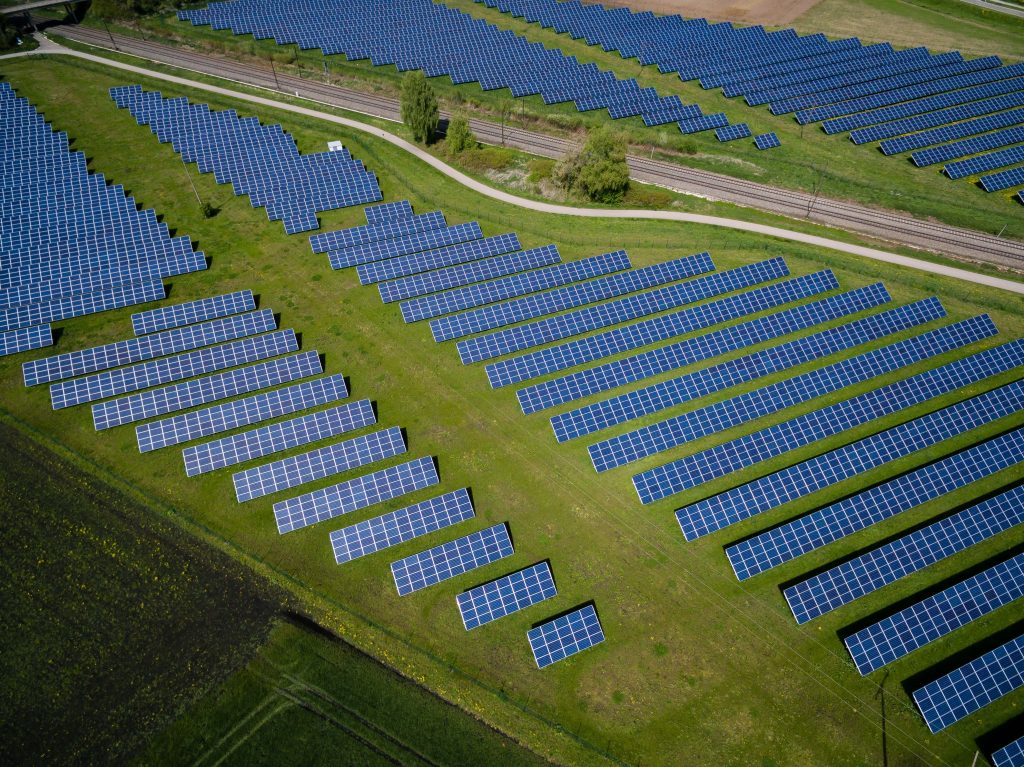As the world continues to shift towards renewable energy sources, the need for innovative energy storage solutions is becoming increasingly important. With the demand for clean energy on the rise, so too is the need to find ways to harness and store the power generated by solar, wind, and other renewable sources. In this article, we will explore the most cutting-edge energy storage solutions currently in development, and how they can help unlock the full potential of renewable energy.

The Growing Demand for Renewable Energy
The demand for renewable energy is growing at an exponential rate, driven by the increasing awareness of the environmental impact of fossil fuels and the need to reduce greenhouse gas emissions. As a result, governments and businesses worldwide are investing heavily in renewable energy projects, with solar and wind power leading the charge. However, the intermittent nature of these energy sources presents a significant challenge to their widespread adoption.
The Intermittency Problem
Solar and wind energy sources are dependent on weather conditions, which can be unpredictable and vary greatly throughout the day and night. This intermittency problem makes it difficult for these renewable energy sources to provide a consistent and reliable power supply. To overcome this challenge, it is essential to develop effective energy storage solutions that can store excess energy when it is available and release it when needed.

The Role of Energy Storage in Renewable Energy Integration
Energy storage plays a crucial role in enabling the widespread integration of renewable energy sources into the power grid. By storing excess energy generated during periods of high output, energy storage systems help to smooth out fluctuations in power supply and ensure a constant and reliable source of electricity. This not only improves the overall efficiency and stability of the grid but also enables renewable energy sources to be used more effectively.
Grid-Scale Energy Storage Solutions
Several grid-scale energy storage solutions are currently being developed to address the intermittency problem associated with renewable energy sources. These solutions range from well-established technologies such as pumped hydro storage and compressed air energy storage to emerging technologies like advanced batteries and flywheels. Below, we will explore some of the most promising grid-scale energy storage solutions in greater detail.
Pumped Hydro Storage
Pumped hydro storage is a well-established and widely used energy storage solution that involves pumping water uphill to a higher elevation reservoir when excess energy is available. When energy demand is high, the water is released back down through turbines, generating electricity in the process. While pumped hydro storage is a proven and effective solution, it requires specific geographical conditions and has high initial construction costs.
Compressed Air Energy Storage
Compressed air energy storage (CAES) involves storing excess energy by compressing air in underground caverns or other suitable storage spaces. When energy is needed, the compressed air is released, driving a turbine to generate electricity. CAES is a promising solution due to its relatively low cost and the abundance of suitable storage sites, but it currently has lower energy efficiency compared to other storage solutions.
Advanced Battery Technologies
Battery storage is perhaps the most well-known energy storage solution, with lithium-ion batteries being the most widely used technology. However, there are several other advanced battery technologies currently in development, including flow batteries, solid-state batteries, and sodium-ion batteries. These emerging technologies promise to offer improved energy density, faster charging times, and lower costs compared to traditional lithium-ion batteries.
Flywheels
Flywheel energy storage systems store excess energy by converting it into kinetic energy, using a spinning flywheel to store the energy. When energy is needed, the flywheel’s kinetic energy is converted back into electricity. Flywheel systems offer high energy efficiency, fast response times, and long lifespans, making them a promising solution for grid-scale energy storage.
Distributed Energy Storage Solutions
In addition to grid-scale energy storage solutions, there are also several distributed energy storage solutions being developed for use at the local level. These systems are designed to store energy close to the point of consumption, providing greater flexibility and reducing the reliance on large-scale energy storage facilities.
Residential Battery Storage
Residential battery storage systems, such as the Tesla Powerwall, allow homeowners to store excess energy generated by solar panels or other renewable energy sources. This stored energy can then be used during periods of high demand or when the sun isn’t shining, reducing the homeowner’s reliance on the grid and lowering their energy bills.
Community Energy Storage
Community energy storage (CES) systems are larger-scale storage solutions designed to serve multiple homes or businesses within a local area. These systems can store excess energy generated by local renewable energy sources or from the grid during periods of low demand, and then distribute the stored energy to users when needed. CES offers a more efficient and cost-effective way to store and distribute energy at the local level, helping to reduce the strain on the power grid.
Electric Vehicle-to-Grid Integration
As electric vehicle (EV) adoption continues to increase, the potential for using EV batteries as a distributed energy storage solution is becoming more apparent. By connecting EVs to the grid, their batteries can be used to store excess energy and release it back into the grid when needed. This vehicle-to-grid (V2G) integration not only helps to balance the grid but also offers EV owners the potential to earn revenue by providing energy storage services.
The Future of Energy Storage
The future of energy storage looks promising, with continued advancements in both grid-scale and distributed energy storage solutions expected to play a key role in unlocking the full potential of renewable energy. As governments and businesses around the world continue to invest in research and development, it is likely that we will see even more innovative approaches to energy storage emerge in the coming years.
The Role of Artificial Intelligence and Machine Learning
Advancements in artificial intelligence (AI) and machine learning are expected to play a significant role in optimizing energy storage systems and improving overall grid efficiency. By analyzing vast amounts of data and making real-time decisions, AI algorithms can help to determine the most efficient way to store and distribute energy, ensuring that renewable energy sources are used to their full potential.
The Importance of Policy and Regulation
As energy storage technologies continue to evolve, it is essential that policy and regulation keep pace with these advancements. Governments must establish clear regulatory frameworks that support the development and deployment of energy storage solutions, providing incentives for investment and ensuring that energy storage systems can be easily integrated into the power grid.
Collaboration Between Stakeholders
The successful implementation of energy storage solutions will require collaboration between a wide range of stakeholders, including governments, utilities, technology developers, and end-users. By working together to share knowledge, expertise, and resources, these stakeholders can help to drive the development and adoption of innovative energy storage solutions, paving the way for a more sustainable energy future.
Conclusion
Innovative solutions for energy storage are essential to unlocking the potential of renewable energy, providing a means to address the intermittency problem and ensure that clean energy sources can be used effectively and efficiently. As advancements in both grid-scale and distributed energy storage solutions continue, it is clear that energy storage will play a pivotal role in shaping the future of renewable energy and helping to create a more sustainable world.
